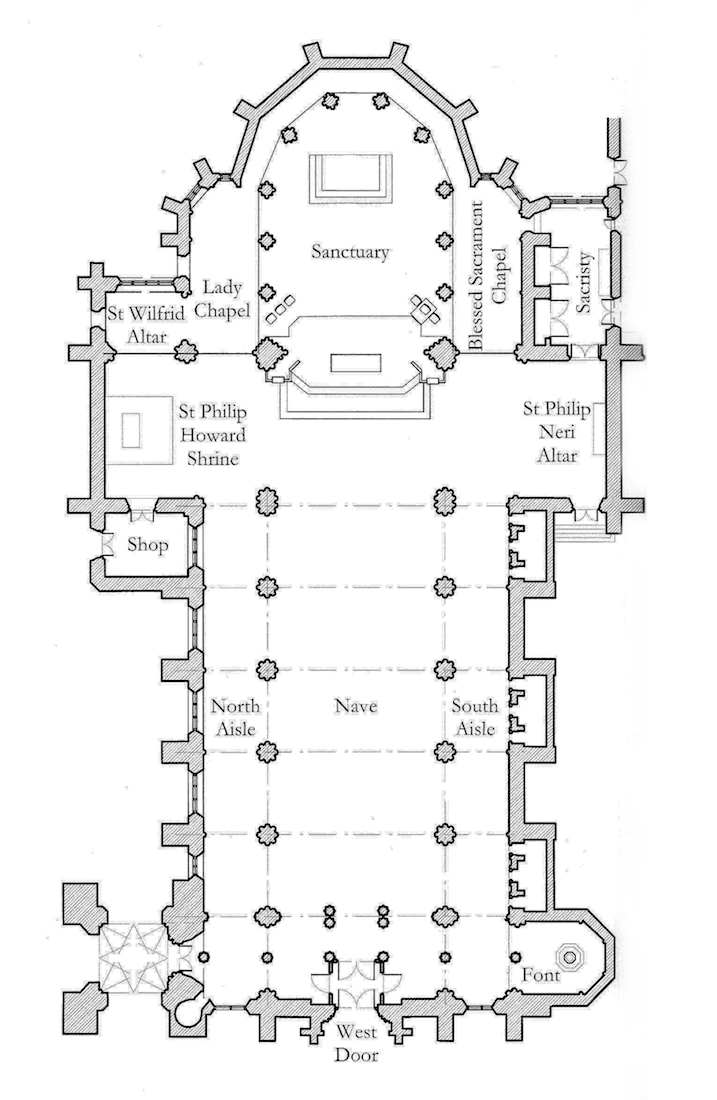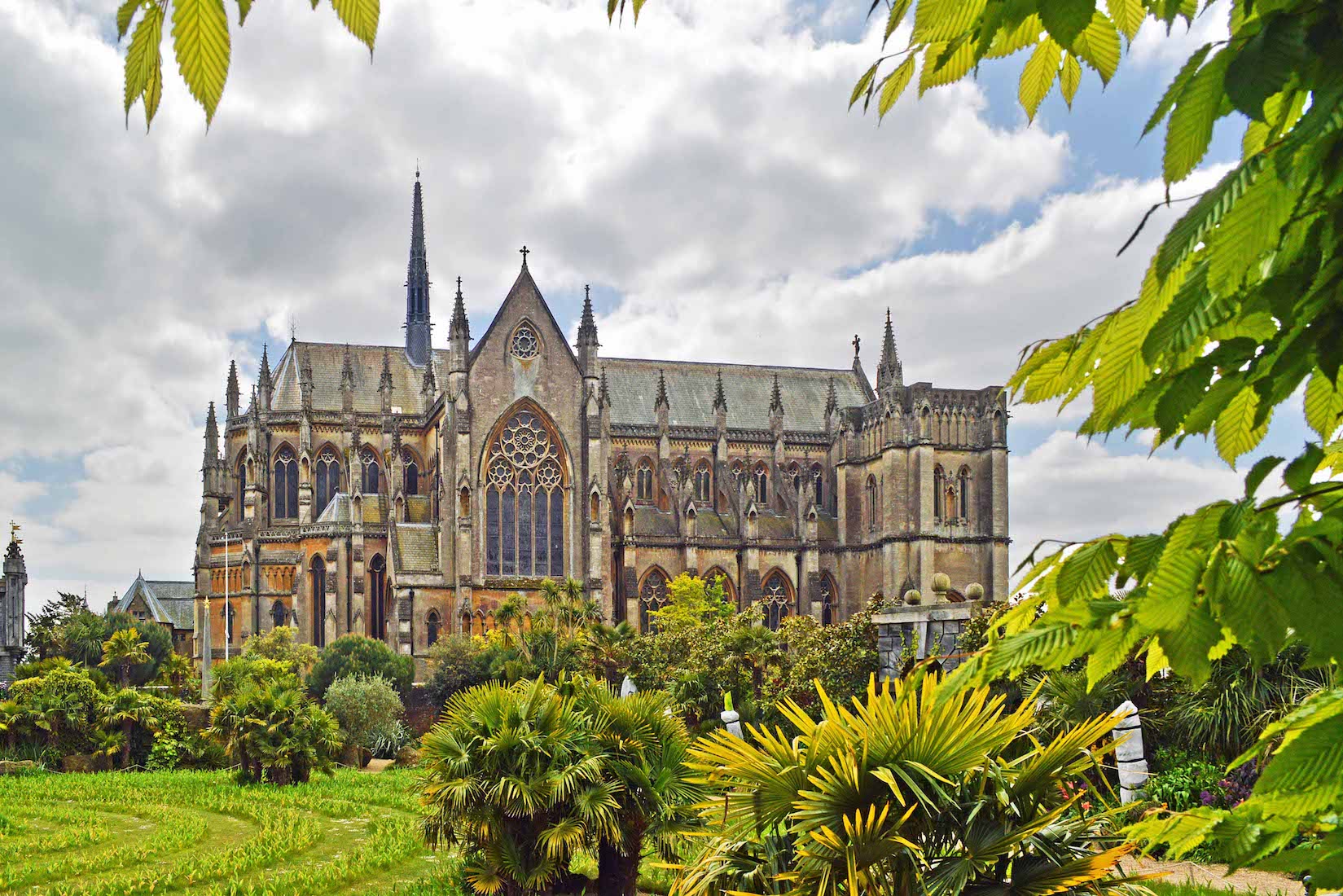ARUNDEL CATHEDRAL
SUSSEX, ENGLAND CATHOLIC
PAUL SCOTT

This is a plan of Arundel Cathedral. It is simple in its structure, being basically cruciform with the bell tower and baptistry added at the bottom, and the shop, three chapels and the sacristy added alongside the transepts. Three confessionals line the South aisle. A ‘semicircular’ apse at the top completes the picture.
Because adjoining buildings link to the Cathedral sacristy, we shall begin our tour of the exterior close to this point, and walk around the Cathedral in a clockwise direction to the sanctuary end, where we shall again find our path blocked. We then retrace our steps to the West Door (bottom), and go inside. Here we make our way from the West Door to the sanctuary – a journey of exploration!
A brief history is given below. However, if you want to proceed immediately touring the Cathedral, tap / click on START.
You can also access intermediate points in the tour by a tap / click on the following links:
NOTE ON MAGNIFYING IMAGES
With this website format the images are large enough for most purposes. If there is a need for greater magnification of an image, go to the identical photo on
https://www.flickr.com/photos/paulscottinfo/albums
and use Command - + (Mac) or Windows - + (Windows).
HISTORY
[Wikipedia]
The Cathedral Church of Our Lady and St Philip Howard is a Roman Catholic cathedral in Arundel, West Sussex, England. Dedicated in 1873 as the Catholic parish church of Arundel, it became a cathedral at the foundation of the Diocese of Arundel and Brighton in 1965. It now serves as the seat of the Bishop of Arundel and Brighton.
The Cathedral’s location, construction, design, and dedication owe much to the Howard family, who, as Dukes of Norfolk and Earls of Arundel are the most prominent English Catholic family, and rank first (below the royal family) in the Peerage of England. Since 1102 the seat of the Howards’ ancestors has been Arundel Castle.
In 1664, Roman Catholic worship was suppressed in England by the Conventicle Act, and all churches and cathedrals in England were transferred to the Church of England. With the Catholic Emancipation Act of 1829, the foundation of Roman Catholic parishes became lawful once again.
In 1868, Henry Fitzalan-Howard, 15th Duke of Norfolk, commissioned the architect Joseph Hansom to design a new Roman Catholic sanctuary as a suitable counterpart to Arundel Castle. The architectural style of the cathedral is French Gothic, a style that would have been popular between 1300 and 1400 – the period in which the Howards rose to national prominence in England. The building is Grade I listed and is regarded as one of the finest examples of Gothic Revival architecture in the French Gothic style in the country.
The church was originally dedicated to Our Lady and St Philip Neri, but in 1971, following the canonisation of Philip Howard, 1st Earl of Arundel, and the reburial of his relics in the cathedral, the dedication was changed to Our Lady and St Philip Howard.
https://en.wikipedia.org/wiki/Arundel_Cathedral#History



